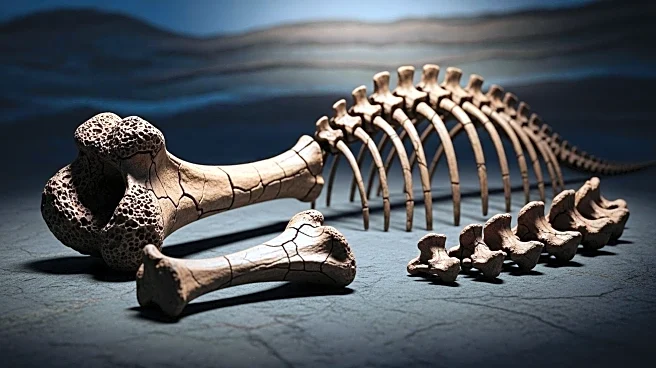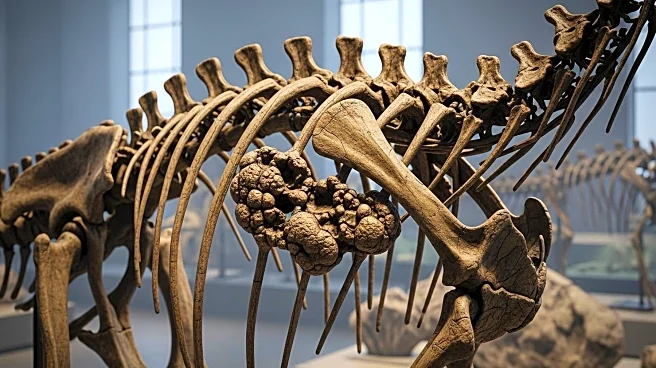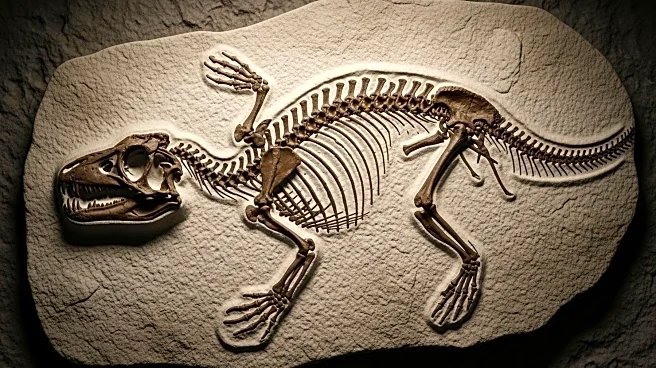What is the story about?
What's Happening?
A study conducted by researchers in Brazil has uncovered evidence of a fatal bone disease, osteomyelitis, in sauropod dinosaur fossils found in the municipality of Ibirá, São Paulo. The fossils, dating back to the Cretaceous period approximately 80 million years ago, show no signs of healing, indicating that the disease was active at the time of the dinosaurs' deaths. The research, supported by FAPESP and published in The Anatomical Record, suggests that the region's conditions were conducive to the spread of pathogens, potentially transmitted by mosquitoes or contaminated water. The study identified three previously unknown manifestations of osteomyelitis in the fossils, characterized by various protrusions and lesions.
Why It's Important?
The discovery of osteomyelitis in sauropod fossils provides significant insights into the health challenges faced by dinosaurs and the environmental conditions of the Cretaceous period. Understanding the prevalence and impact of infectious diseases in ancient species can inform current paleontological and archaeological research, offering clues about the ecosystems and climates of prehistoric times. This research also highlights the potential for pathogens to influence the survival and evolution of species, drawing parallels to modern-day concerns about disease transmission and environmental health.
What's Next?
Future research may focus on identifying the specific pathogens responsible for the infections and exploring the environmental factors that facilitated their spread. The findings could lead to further studies on the interactions between ancient species and their habitats, as well as the role of disease in shaping evolutionary paths. Additionally, the study's methodology, including the use of advanced imaging techniques, may be applied to other fossil analyses, potentially uncovering new information about prehistoric life.
Beyond the Headlines
The study raises questions about the ethical considerations of paleontological research, particularly in terms of preserving and studying fossils that may hold sensitive information about ancient ecosystems. It also prompts discussions about the long-term implications of disease on biodiversity and the resilience of species in changing environments.
AI Generated Content
Do you find this article useful?
















